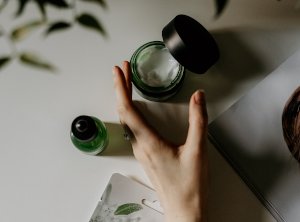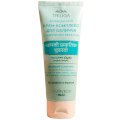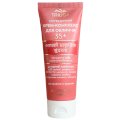 Taking into account the huge variety of skincare products offered by various brands, it can be difficult for modern buyers to figure out which beauty product is the best and why exactly. That is why it is very helpful to be able to read ingredient lists and to know the purpose and properties of the most popular skincare ingredients. Today, let’s take a closer look at cosmetic ingredients nomenclature and the most popular face cream ingredients.
Taking into account the huge variety of skincare products offered by various brands, it can be difficult for modern buyers to figure out which beauty product is the best and why exactly. That is why it is very helpful to be able to read ingredient lists and to know the purpose and properties of the most popular skincare ingredients. Today, let’s take a closer look at cosmetic ingredients nomenclature and the most popular face cream ingredients.
In most countries cosmetic producers are legally required to disclose the ingredients of their products on the packaging. Most often, ingredients are listed according to the International Nomenclature of Cosmetic Ingredients (INCI) that was adopted in the European Union in 1997.
According to the nomenclature, the ingredients are listed in descending order by their concentration in the product, with the exception of those whose content is less than 1%. Plant-based ingredients (extracts, oils, juices, etc.) contain the binomial (Latin) name of the plant, sometimes with the common English name in brackets for clarity. As for the rest of the ingredients, their INCI name often coincides with their common name, but it is not always the case.
If a cosmetic products contains colourants, they are always listed at the very end, regardless of their concentration. Colourants are designated by their Colour Index Constitution Number (a 5-digit number in the Colour Index International database) prefixed with the Colour Index Generic Name (CI or C.I.).
Any face cream is an emulsion of oil and water, which also contains various active ingredients and auxiliary ingredients that ensure the desired consumer characteristics of the product (texture, stability, shelf life, etc.). As a result, the two main ingredients in any face cream are water and oil / a blend of oils. According to INCI, these ingredients must be listed at the beginning of the ingredient list.
Water is usually designated as Aqua or by its common name. Oils typically contain the Latin name of the plant they’re obtained from, like we’ve already mentioned above. The ratio of water to oil in a face cream can be different depending on the desired purpose and texture of the cream. Lighter creams are oil-in-water emulsions, while heavier creams are water-in-oil emulsions. Since emulsions are inherently unstable, all face creams contain emulsifiers.
An emulsifier is a substance that helps to keep an emulsion stable. Common emulsifiers that can be found in face creams include polysaccharides (xanthan gum and guar gum), lecithin, fatty alcohols, synthetic and semi-synthetic polymers. Here are some of their INCI names: Lecithin, Сetearyl Alcohol, Lauryl Alcohol, Myristyl Alcohol, Cetearyl Olivаte, Sorbitan Olivate, Glyceryl Stearate, Cetearyl Glucoside, Cocoyl Glucoside, etc.
In addition to water, oils and emulsifiers, face creams contain biologically active ingredients that ensure the declared effect of the cream, for example, nourish and moisturise the skin, even out skin tone, produce an anti-inflammatory effect, etc. Common active ingredients in face creams include vegetable and essential oils, plant extracts, organic acids, mineral ingredients, vitamins, natural and synthetic emollients and humectants, and various patented complexes that target specific skin problems.
There are so many active ingredients used by cosmetic producers that it is simply impossible to list them all. In addition, it is important to understand that most cosmetic ingredients are both active and functional. For example, tea tree essential oil can act as an antibacterial active ingredient and as a preservative that prevents bacterial growth in the cream. Lecithin is a common emulsifier, but it also helps to take care of the skin, helping to provide it with oxygen and acting as an enhancer (a cosmetic ingredients that helps to transport other active ingredients to the deeper layers of the skin).
So, how do you pick the active ingredients of a face cream from its ingredient list? To do this, you need to read what tasks the cream is supposed to solve and then look for the ingredients that are specifically designed to solve these tasks.
For example, creams for oily and combination skin usually contain ingredients that control the production of skin oil. They include marigold extract (Calendula Officinalis Flower Extract), oak bark extract (Quercus Robur Bark Extract), witch-hazel extract (Hamamelis Virginiana Leaf Extract), and ginger root extract (Zingiber Officinale Root Extract).
Face creams for dry skin are typically formulated with natural carrier oils, ceramides, and other emollients and humectants. Look for ingredients such as Olea Europaea (Olive) Fruit Oil, Simmondsia Chinensis (Jojoba) Seed Oil, Butyrospermum Parkii (Shea) Butter, Cocos Nucifera (Coconut) Oil, hyaluronic acid or sodium hyaluronate, urea, glycerin, phospholipids.
Creams for sensitive skin always contain soothing and regenerative ingredients that prevent redness, relieve itchy and flaky skin, and strengthen the skin’s natural protective barrier. They include chamomile extract (Chamomilla Recutita (Matricaria) Flower Extract), panthenol, allantoin, and bisabolol.
There are two more groups of ingredients that can be found in face creams alongside water, oil, emulsifiers and active ingredients. They are fragrances and preservatives. Fragrances mask the natural scent of raw materials and make cosmetic products more attractive to consumers, and preservatives prevent decomposition and extend the shelf life of cosmetics.
Fragrances can consist of various aroma compounds. Some manufacturers use a cheap mixture of synthetic compounds, and others use a blend of essential oils and/or their individual components such as linalool, eugenol, cintronellol, limonene, menthol, and other terpenes. Natural essential oils give cosmetics a lighter and more natural scent, but many of them are allergens.
According to INCI requirements, manufacturers are not obliged to indicate the composition of the fragrance in detail. Most often, it is designated simply as Parfum. However, when manufacturers want to highlight that their products are natural, they would specify the components of the fragrance or indicate the source of the raw material in brackets.
As for preservatives, they can be synthetic or natural (or a mix of both). Synthetic preservatives include, for example, the notorious parabens. They are highly effective, but some consumers are wary of them. Popular natural preservatives include benzoic acid, sorbic acid, salicylic acid, lactic acid, dehydroacetic acid, citric acid, potassium sorbate, sodium sorbate, calcium sorbate, benzyl alcohol, isopropyl alcohol, and ethanol.
These are the basic groups of ingredients that can be found in face creams; you simply cannot make a face cream without oil, water, emulsifier, active ingredients, preservatives, and fragrance. However, the exact ingredient list of any cream depends on the manufacturer. Some cosmetic producers use the cheapest synthetic ingredients that may cause skin irritation, while others use ingredients derived from natural raw materials, which may be more expensive, but they are also safer and more effective.
In our online shop Organic Store, you will find a great selection of natural and organic face creams produced by trustworthy manufacturers. At Organic Store, we offer affordable prices, convenient payment methods, and international delivery to most parts of the world to make your online shopping experience as smooth and pleasant as possible.
Face Creams in Our Store
Triuga Ayurveda Mix Kapha Mattifying Face Cream for Oily Skin, 75 ml |
Triuga Ayurveda Mix Vata Face Cream 35+, 75 ml |
